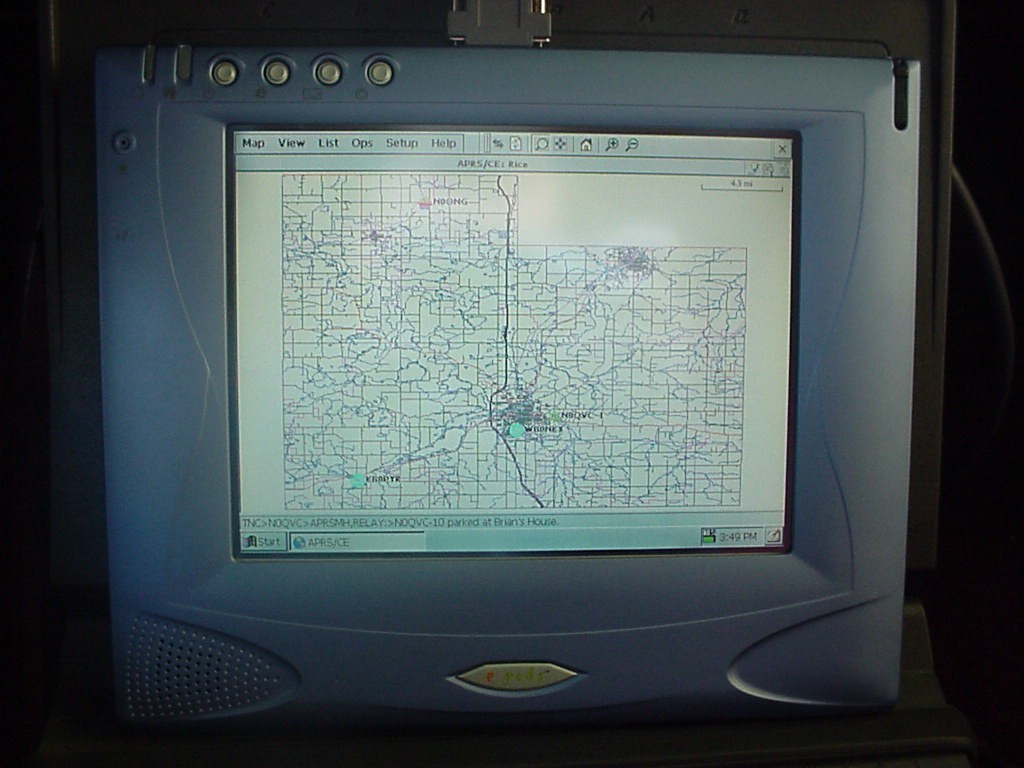“Snow, Snow, and More Snow!” Chad, Doug, and myself went quad riding at Tri-County on March 10th. It was fun while it lasted, but now we’ve got over a foot of snow on the ground again. I’ll be bringing you more fun riding updates as we get into Spring, but for now, here’s an article on home wireless security that I wrote for our Technology newsletter at work. Hope you’ll enjoy!
Home Wireless Security
By Brian Klier
Every time I go to Best Buy, it seems like I need to make that one “impulse buy” before I can leave the place. There are so many new and fun gadgets around to play with that are supposed to make your life easier or more entertaining.
For many, the wireless access point is the ultimate “impulse buy”. Just the thought of being able to do your schoolwork from out on the patio, all the while having Internet access, is simply too great to pass up. You grab the wireless access kit, pay for it at the checkout, and bring it home, smiling the whole while. Once home, you plug in your new wireless access point, and turn on the wireless on your laptop. “This is every bit as good as I envisioned!” However, what most people don’t realize is that now your neighbors are also having a great time, on your bandwidth, on your local network … even that creepy guy with the long skinny beard that lives two doors down. Not only are you sharing your Internet connection, but depending on how your home computer(s) are set up (do you have a password?), you may be sharing your personal documents and financial information too.
Manufacturers set wireless kits up to make it easy for you to connect. Most of these kits have excellent security features to prevent this from happening, but around 75% of wireless households in Faribault never read far enough in the manual, or do their own research, to find out how to enable them. While every access point is different in configuration, there are a set of recommendations I have for you to make you aware of the security options you have.
First, change the default Administrator passwords (and usernames) on your access point. Many access points/routers provide a nice Web interface for you to configure the device. Be sure the first thing you do is to change your password on it. Default passwords are simple and very well-known to hackers on the Internet.
Next, turn on WPA or WEP Encryption. Every access point has the feature to enable some sort of encryption. It is important to note that the data itself IS STILL NOT ENCRYPTED with WEP, but activating encryption forces other people to know your code before gaining access to your network. Pick the strongest form of encryption that works with all devices on your wireless network. You will need to type the same code on your access point and on any computer using the wireless access in able for it to work.
Also, very importantly, change the default SSID. Access points and routers all use a network name called the SSID. From the factory, the SSIDs are all set the same. For example, the SSID for Linksys devices is normally “linksys”. If you have a default SSID set on your wireless access point, you are telling the world that “I have not configured my device and I’m most likely insecure”. Be sure to change it, but don’t provide any personally identifiable information in it.
Next, do your own Wi-Fi “site survey”. Walk around your house with your laptop, and find out exactly how far your network reaches. If it reaches too far outside your property line, readjust the access point inside your home to change the coverage area.
Last, and perhaps the easiest way to protect your network (and also perhaps most obvious) is to shut off your access point when not in use. While you may laugh, this is truly the ultimate in security measures. Turn on your access point when you will be using wireless devices in your house, and turn off your access point when you are finished. Hackers and neighbors can’t use what’s not plugged in.
Please take some time tonight, if you have wireless at home, to check these few things on your access point. Break open your access point’s manual, and learn how to protect yourself!
Caption text of picture below: See all the dots? Every dot represents where there is wireless access in Faribault. 75% of these sites are completely insecure. (map and research by Brian Klier)

